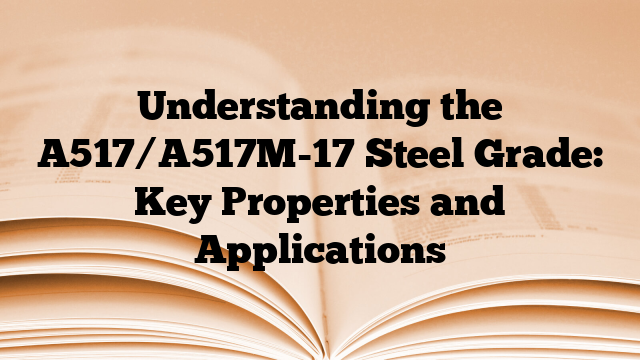Understanding the A517/A517M-17 Steel Grade: Key Properties and Applications
The A517/A517M-17 steel grade is a standard specification for pressure vessel plates, alloy steel, high-strength, quenched, and tempered. This steel grade is typically used in the fabrication process of boilers and pressure vessels in industries such as oil, gas, chemical, petrochemical, and power generation.
The mechanical properties of the A517/A517M-17 steel grade are crucial for its application in pressure vessels. It has a specified minimum yield strength of 100 ksi (690 MPa) and a specified minimum tensile strength of 115 ksi (795 MPa). These high-strength properties make it suitable for withstanding high-pressure environments.
The standard number for the A517/A517M-17 steel grade refers to ASTM A517/A517M, which is the standard specification for pressure vessel plates, alloy steel, high-strength, quenched, and tempered. This standard provides the requirements for the chemical composition, mechanical properties, and heat treatment of the steel.
The corresponding key properties and applications of the A517/A517M-17 steel grade are directly related to its high-strength and quenched and tempered characteristics. It is primarily used in the construction of boilers and pressure vessels that operate under high-pressure conditions. The steel’s ability to withstand high stress and pressure makes it suitable for storing and transporting gases and liquids in industries that require strict safety standards, such as the oil, gas, chemical, petrochemical, and power generation industries.
In summary, the A517/A517M-17 steel grade is an alloy steel with high-strength and quenched and tempered properties. It is commonly used in the fabrication of boilers and pressure vessels in industries that require materials capable of withstanding high-pressure environments. The steel grade is specified by the ASTM A517/A517M standard, which provides guidelines for its chemical composition, mechanical properties, and heat treatment.

